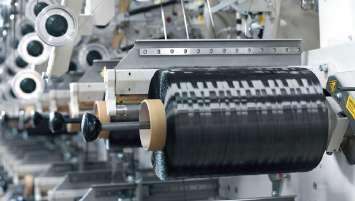FABRIC UPDATE
33
MAKING OF CAMOUFLAGE FABRIC AND ITS APPLICATIONS MS. KSHIPRA GADEY Textile Value Chain What exactly is camouflage fabric?
• To protect planes, artillery, and boats.
tions.
The first permanent unit of the British army was dressed in red uniforms. When the first permanent army was established in 1645, this hue was chosen. Rather, each army adopted a unique set of colours as their national colours. French soldiers tended to wear blue, Russians wore green and British red. The British Army did not issue a Khaki uniform until the late 1800s, when they learned that drab coloured clothing provided greater camouflage.
• For deception.
2. Changes in the oxidation state
• While building tents for living and storage.
The colour of the fabric changes as the oxidation state changes. When we look at the oxidation states of copper, such as 0, +1, and +2, we may see distinct colours. This approach is likewise quite effective, but it necessitates ion migration. In solvents, the response time can be quick, but this complicates the device. Gel-type devices are potentially a possibility, although physical robustness, oxygen stability, and response times pose significant problems. A gadget has been created based on this idea, like a polymer LED.
Camouflage fabric is used to conceal people or equipment from adversaries. Camouflage fabric creates a one-of-akind effect on individuals or equipment by making them disappear or appear as though they are a part of the natural surroundings to an enemy. To achieve this, the fabric or garment is dyed in patches of numerous colours, rendering the user unidentifiable in the surrounding environment. Fabrics that are camouflaged are used:
Key Points • Information about camouflage fabric • Varieties of Fabrics use camouflage • Production methods of camouflage textiles • Major ways using for creating camouflage fabric • Camouflage fabric mainly useful in military force Camouflage Textile Production Methods The idea of producing fabrics that can be easily changed in colour has long been anathema to textile colorists, for whom developing colour permanence has been a key goal from the dawn of time. As a result, colorant makers have spent many years trying to develop quick colored materials by looking for dyes and pigments that are chemically inert and physically resistive once applied to a substrate. The ways for creating camouflage fabric are as follows: 1. The pH shifts
• To produce uniforms for officers and men in the armed forces. • To make armoured vehicles and other equipment inconspicuous.
As we know, molecules can change color considerably in the presence of acids and bases when the cloth is dipped into different polarity solvents. Because of this, a change in hue can occur owing to a change in polarity, but because of the reagents and solvents necessary to transport them, this method is exceedingly difficult to implement in applica-
3. Bond formation/breakage There are several systems available that go through reversible bond-breaking and bond-forming processes, resulting in colour shifts. These processes are typically light-initiated. For example, enol is colorless, but when the atoms are rearranged, the orange hue is observed for the cis form, but the red colour is observed for the transform. 4. Mechanochromism Certain chemicals exhibit colour changes as a function of applied stress, because this mechanochromic system is built via surface modification of conducting polymers. It simply operates based on receptor sensing. 5. Effects of electric or magnetic fields Some highly polarisable systems have been seen to change colour in the presence of electric or magnetic fields. For example, if the solution is red, we can see the colour change as we move the magnet closer to the solution, and the solution turns blue.
SEPTEMBER 2021





















